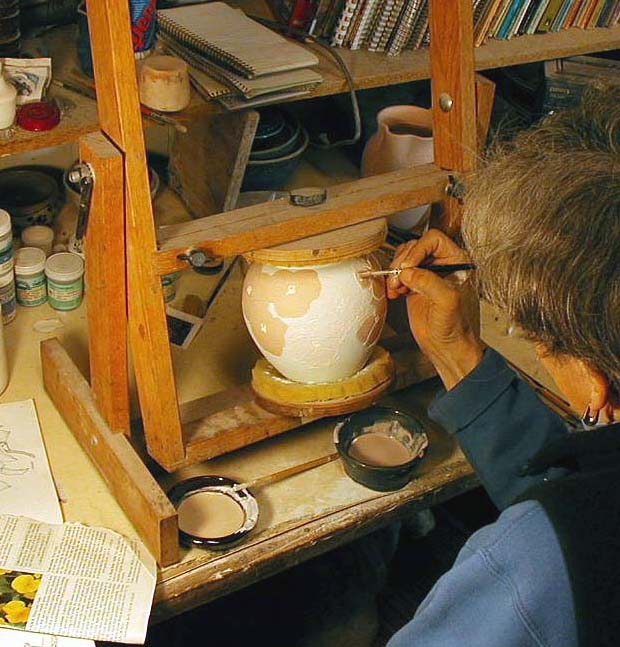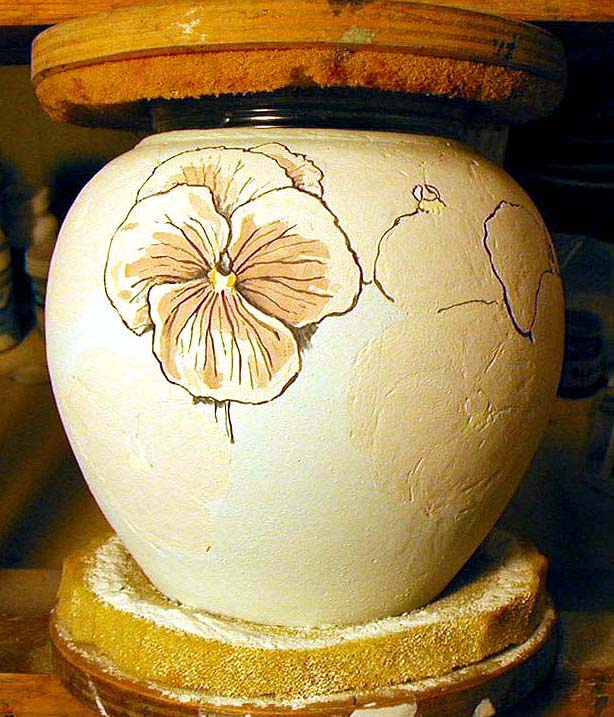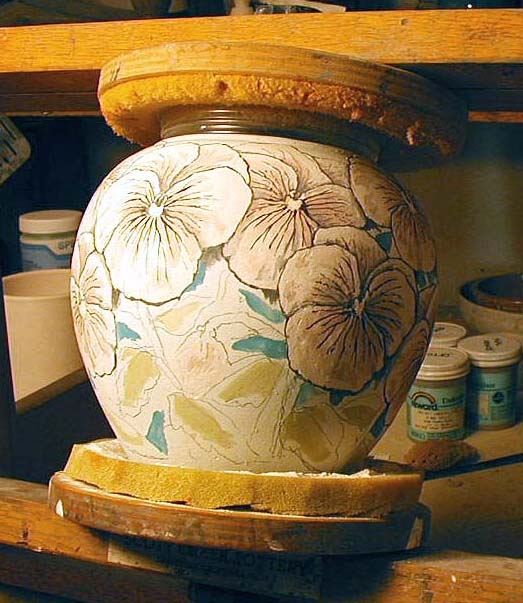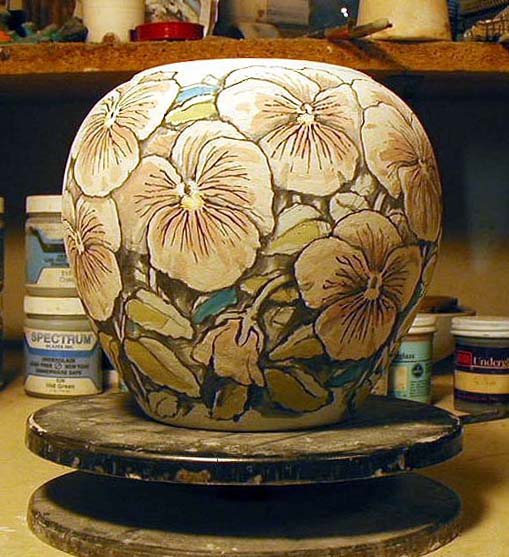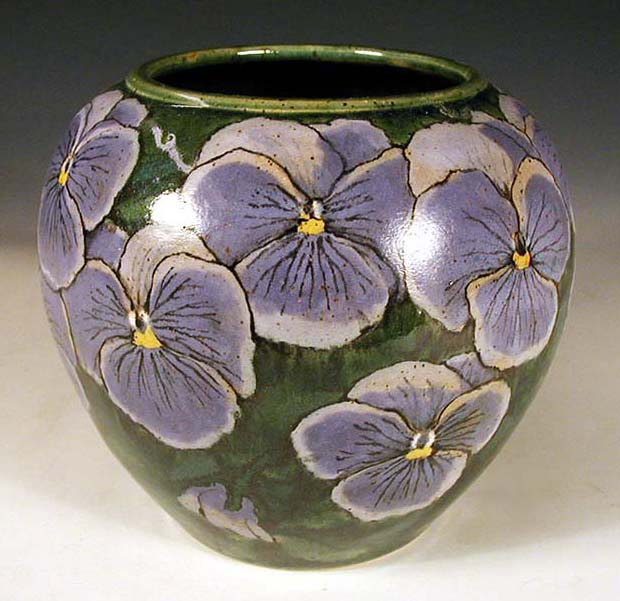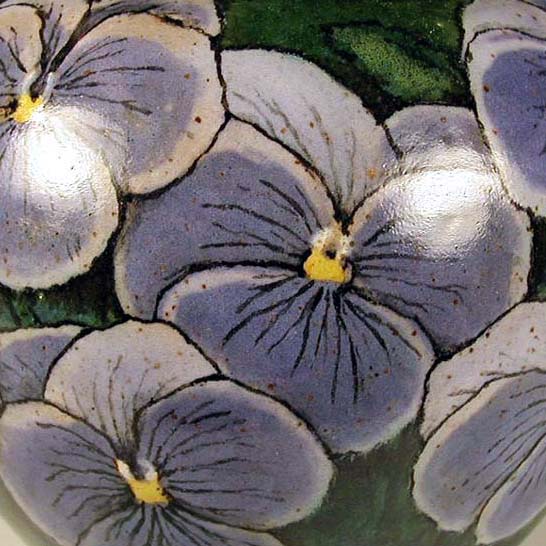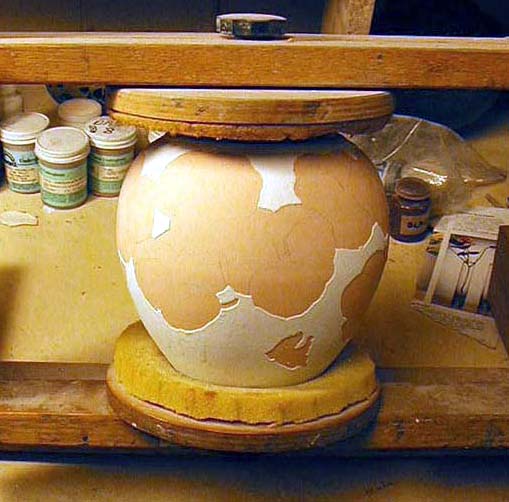
I drew pansies on the pot using the full shape of the pot to enhance the roundness of the flowers. I applied liquid latex in the pansy shapes, then dipped the pot in a deep green semi-matte glaze. When the glaze was dry, I pulled the latex off the pot and placed the pot in the frame for painting. You can see the glaze looks almost white; the color won't be apparent until the pot is fired. |
